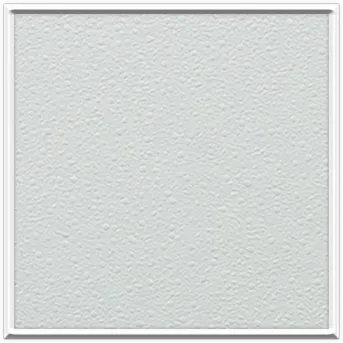Nov . 25, 2024 14:27 Back to list
mineral fibre board ceiling vs gypsum board
Mineral Fibre Board Ceiling vs. Gypsum Board A Comprehensive Comparison
When it comes to selecting the right ceiling material for your construction or renovation project, two of the most popular options are mineral fibre board and gypsum board. Both materials have unique properties and benefits, making them suitable for different applications. In this article, we will delve into the characteristics, advantages, disadvantages, and ideal uses of both mineral fibre board ceilings and gypsum board to help you make an informed decision.
What is Mineral Fibre Board?
Mineral fibre board, also known as mineral wool or acoustic tiles, is a ceiling material made primarily from natural or synthetic mineral fibers. These boards are generally lightweight, making them easy to install. They have excellent sound absorption properties, which makes them popular in commercial buildings, schools, and auditoriums. Moreover, mineral fibre boards come in various sizes, patterns, and finishes, allowing for aesthetic flexibility in interior design.
One of the key features of mineral fibre boards is their fire resistance. They can withstand high temperatures, making them less likely to contribute to the spread of fire. This characteristic is particularly beneficial in commercial buildings where safety regulations are stringent.
Advantages of Mineral Fibre Board
1. Sound Absorption The porous structure of mineral fibre boards helps reduce noise levels, making them ideal for spaces where acoustics are important. 2. Fire Resistance Many mineral fibre boards are non-combustible, providing safety benefits in case of fire incidents. 3. Moisture Resistance Some types of mineral fibre boards are designed to resist moisture, reducing the risk of mold growth in humid environments. 4. Ease of Installation Mineral fibre boards can be easily cut and installed, often using a grid system that simplifies the process.
Disadvantages of Mineral Fibre Board
1. Durability While mineral fibre boards are effective in managing sound and fire, they can be less durable compared to gypsum board. They may sag or crumble over time, especially in high-traffic areas. 2. Limited Structural Support Mineral fibre boards are lightweight, but they do not provide the same structural support as gypsum boards for hanging fixtures. 3. Cost Depending on the design and finish, some mineral fibre boards can be more expensive than gypsum options.
mineral fibre board ceiling vs gypsum board

What is Gypsum Board?
Gypsum board, often referred to as drywall or plasterboard, consists of a core of gypsum plaster sandwiched between two sheets of heavy paper or fiberglass mat. This material has gained popularity due to its versatility, affordability, and ease of installation. Gypsum boards are commonly used not only for ceilings but also for walls.
Gypsum board ceilings provide a smooth, seamless surface that can be painted or finished according to the design needs. Additionally, many gypsum boards are treated for moisture resistance and fire resistance, making them suitable for a range of applications, including residential and commercial buildings.
Advantages of Gypsum Board
1. Versatility Gypsum board can be used in various applications, including walls, ceilings, and partitions, offering a seamless look throughout a space. 2. Durability Gypsum boards are generally more durable than mineral fibre boards, making them suitable for high-traffic areas or settings where durability is essential. 3. Cost-Effectiveness Generally, gypsum board is more affordable than mineral fibre board, making it an attractive option for budget-conscious projects. 4. Fire Resistance Many gypsum boards come with a fire-resistant core, adding to the safety of buildings.
Disadvantages of Gypsum Board
1. Limited Sound Absorption While gypsum board can provide some soundproofing, it is not as effective as mineral fibre boards in controlling sound. 2. Moisture Sensitivity Standard gypsum boards are susceptible to moisture; however, moisture-resistant varieties are available at a higher cost. 3. Installation Complexity Gypsum board installation can be more labor-intensive than mineral fibre boards, particularly for seamless applications.
Conclusion
In conclusion, both mineral fibre board and gypsum board offer distinct advantages and disadvantages that cater to different project needs. If sound absorption and fire resistance are your primary concerns, mineral fibre board may be the better choice. Conversely, if you’re seeking a versatile, durable, and cost-effective solution, gypsum board should be your go-to option. Ultimately, the decision should align with your specific requirements, budget, and aesthetic preferences. Each material brings its own unique set of features that can enhance your space in various ways, ensuring that your ceilings not only serve a functional purpose but also contribute to the overall design and ambiance of the interior.
-
Quality Ceiling Trap Doors & Access Panels | Easy & Secure AccessNewsAug.30,2025
-
Durable Ceiling T Grid Systems | Easy InstallationNewsAug.29,2025
-
PVC Gypsum Ceiling: Durable, Laminated Tiles for Modern SpacesNewsAug.28,2025
-
Pvc Gypsum Ceiling Is DurableNewsAug.21,2025
-
Mineral Fiber Board Is DurableNewsAug.21,2025
-
Ceiling Tile Clip Reusable DesignNewsAug.21,2025







